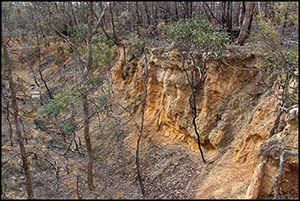Crossref Citations
This article has been cited by the following publications. This list is generated based on data provided by
Crossref.
Davies, Peter
Turnbull, Jodi
and
Lawrence, Susan
2016.
Remote sensing landscapes of water management on the Victorian goldfields, Australia.
Journal of Archaeological Science,
Vol. 76,
Issue. ,
p.
48.
Halperin, Christina T.
2017.
Anthropological Archaeology in 2016: Cooperation and Collaborations in Archaeological Research and Practice.
American Anthropologist,
Vol. 119,
Issue. 2,
p.
284.
Davies, Peter
and
Lawrence, Susan
2019.
Engineered landscapes of the southern Murray–Darling Basin: Anthropocene archaeology in Australia.
The Anthropocene Review,
Vol. 6,
Issue. 3,
p.
179.
Davies, Peter
Lawrence, Susan
and
Middleton, Angela
2020.
Citizen of Empire: A Transnational Archaeology of James William Robertson.
International Journal of Historical Archaeology,
Vol. 24,
Issue. 3,
p.
483.
Davies, Peter
Lawrence, Susan
Turnbull, Jodi
Rutherfurd, Ian
Silvester, Ewen
Grove, James
and
Macklin, Mark G.
2020.
Groundwater extraction on the goldfields of Victoria, Australia.
Hydrogeology Journal,
Vol. 28,
Issue. 7,
p.
2587.
Davies, Peter
Lawrence, Susan
Turnbull, Jodi
Rutherfurd, Ian
Grove, James
Silvester, Ewen
and
Macklin, Mark
2020.
Mining modification of river systems: A case study from the Australian gold rush.
Geoarchaeology,
Vol. 35,
Issue. 3,
p.
384.
Spry, Caroline
Kurpiel, Rebekah
Foley, Elizabeth
Turnbull, Jodi
and
Penzo-Kajewski, Paul
2021.
Disentangling activity traces on Australian goldfields: An experimental study of quartz assemblages derived from knapping and gold prospecting.
Australian Archaeology,
Vol. 87,
Issue. 1,
p.
49.
Haines, Julia Jong
2021.
Shaping Landscapes: Environmental History, Plantation Management and Colonial Legacies in Mauritius.
International Journal of Historical Archaeology,
Brauch, Hans Günter
2021.
Paul J. Crutzen and the Anthropocene: A New Epoch in Earth’s History.
Vol. 1,
Issue. ,
p.
289.
Venovcevs, Anatolijs
2023.
Industrial Vestiges: Legacies of Ancillary Impacts of Resource Development.
Historical Archaeology,
Vol. 57,
Issue. 1,
p.
336.
Lawrence, Susan
Davies, Peter
Hil, Greg
Rutherfurd, Ian
Grove, James
Turnbull, Jodi
Silvester, Ewen
Colombi, Francesco
and
Macklin, Mark
2023.
Characterising mine wastes as archaeological landscapes.
Geoarchaeology,
Vol. 38,
Issue. 4,
p.
389.





